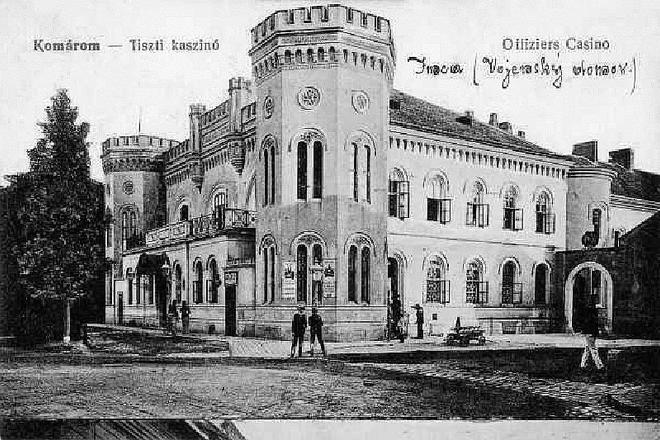THIS postcard from 1918 shows an interesting architectural monument – the Officers’ Pavilion in Komárno. It was built between 1858 and 1863 and originally contained flats for officers of the Imperial and Royal Army and their families. The ground floor was used as a casino for the officers’ entertainment.
In the second half of the 19th century, the Austro-Hungarian Army swelled markedly in size and the issues of accommodation and logistics had to be solved. Towns were ideal as part of the solution. Although wooden barracks were sufficient for ordinary soldiers, officers needed something better. In addition to good accommodation, soldiers had trouble-free and regular boarding and a functional transport system in the towns.
The deployment of army regiments was a blessing for the towns, as well, as they could offer their buildings for rent to the state, and also – for the army’s needs – to employ a lot of people. Thus, in some cases towns literally fought for the privilege to accommodate an army unit. By 1910, the Austro-Hungarian Army was housed in 60 towns and cities across the empire.


